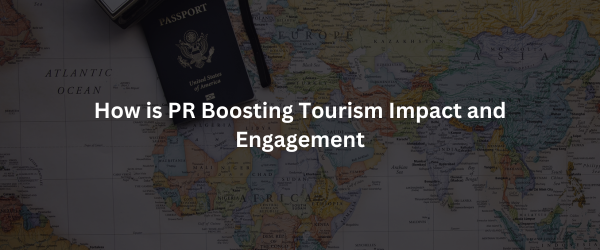
How can Graduate Students boost their Corporate Career in 2023?
October 4, 2023
Career Gap? How PR & Corp Communications Can Shape Your Career Comeback!
October 11, 2023In today’s digital age, where information spreads like wildfire, public relations (PR) plays a pivotal role in shaping the tourism industry. Beyond merely promoting destinations, PR strategies have the power to boost tourism impact and engagement significantly. Let’s explore how the art of storytelling and strategic communication are transforming the way we travel.
PR BOOSTING TOURISM
Creating Compelling Narratives
PR professionals craft captivating stories that resonate with the audience. These narratives showcase the unique culture, heritage, and attractions of a destination, painting an irresistible picture for potential travelers. By weaving these stories into various media channels, including social media, blogs, and news outlets, PR enhances a destination’s allure, enticing travelers to explore the unknown.
Building Credibility and Trust
Trust is the backbone of any successful tourism industry. PR activities, such as positive media coverage, celebrity endorsements, and testimonials, build credibility for a destination. Additionally, travelers are more likely to visit a place they perceive as trustworthy and safe. By managing public perception, PR helps in establishing a positive image, encouraging tourists to make informed decisions about their travel destinations.
Fostering Community Engagement
Tourism is not just about attracting visitors; it’s about creating meaningful connections with the local community. PR initiatives that emphasize responsible tourism and community engagement build a sense of pride among locals. When residents are proud of their heritage and culture, they naturally become ambassadors, welcoming tourists with open arms. Similarly, this sense of community fosters positive interactions, enriching the overall travel experience.
Harnessing the Power of Social MediaSocial media platforms have become invaluable tools for tourism PR. Engaging content, visually appealing images, and real-time updates create a buzz online. Social media influencers and travel bloggers, often part of PR campaigns, share their firsthand experiences, reaching a vast audience. In addition, user-generated content further amplifies a destination’s reach, as travelers share their adventures, inspiring others to follow suit.
Crisis Management and Reputation Repair
In the unfortunate event of a crisis, such as natural disasters or political unrest, PR professionals play a critical role in managing the situation. Transparent communication, timely updates, and empathy can mitigate potential damage to a destination’s reputation. By addressing concerns head-on and showcasing resilience, PR helps in rebuilding trust and luring tourists back when the situation improves.
In conclusion, as the tourism industry continues to evolve, the role of PR in boosting engagement and leaving a lasting impression on tourists remains indispensable. Through strategic communication, the world becomes a smaller, more interconnected place, inviting travelers to explore the diverse tapestry of cultures and landscapes our planet has to offer.




